LG G4 vs LG G3
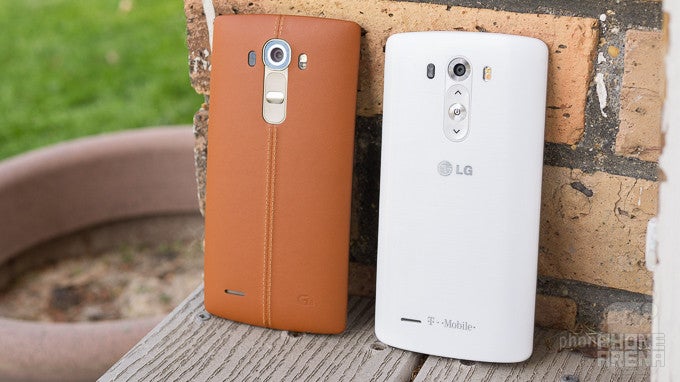
Introduction
Launched in May 2014, the LG G3 was LG's strongest effort against Samsung's Android dominance at the time. An impressive upgrade over its predecessor, the LG G2, it was a competent device with a bustling specs sheet and clever, understated design. Perhaps most notably, it was the first globally sold smartphone by a major brand to ship with a Quad-HD resolution display, several months before ultra-high res screens became an industry trend. The G3 also incorporated an innovative laser auto-focus system, which made for a really fast-focusing camera, and a cool conversation piece. Lasers!
For all the great things going on about it, the LG G3 was not without its flaws, as it could not match what it delivered in display sharpness with screaming performance. But there was little LG could do at the time, other than taking advantage of the room for improvement and coming up with a better product next year. Thus, the LG G4 was born – a smartphone that's considerably closer to accomplishing the company's true ambitions.
The LG G4 does contain all the innovation necessary to keep LG in business, but it couldn't address each of its predecessor's shortcomings. Thus, choosing between the two — especially since the LG G3 is being discounted nowadays — might prove a little harder for some. We'll try to make it easier for you by comparing LG's finest, reviewing all the important places where the LG G4 delivers a better experience than its predecessor, or doesn't quite justify the upgrade toll.
Design
The LG G4 doesn't look much different than the LG G3, unless you get it with a leather back. It's also taller, wider, thicker, and heavier.
If, for some reason, you weren't happy with how the LG G3 looked and felt, you probably won't be thrilled with the LG G4 either. It boasts the same general design characteristics, although with a few changes. Sharper lines substitute for the LG G3's rounded curves. There's also subtle arch to the LG G4's body, which LG added to shake up the design in its own peculiar way, and possibly make the smartphone fit more naturally in one's hand. However, the LG G3 is still a little more comfortable to hold and operate with one hand, because it has a smaller footprint.
If premium looks are what you're after, you can buy the LG G4 with a genuine leather back. Vegetable-tanned genuine leather certainly feels more exquisite than the diamond-patterned plastic back cover, which the LG G4's regular version wears to dinner. Still, both the LG G4 and its predecessor are predominantly plastic, and this holds true for the former's premium genuine leather variant, as in the end, the leather is merely glued to its removable plastic back panel. And as other similarities between the two go, they have their volume and power keys on their back panels, and also feature removable batteries & microSD card slots.
Other than that, the LG G4 is actually a small step back from the LG G3, as it has a worse screen-to-body ratio (72.46%), it's bigger (5.86 x 3.00 x 0.39in / 148.9 x 76.1 x 9.8mm), heavier (5.47oz / 155g), and thicker (0.30in / 9.8mm). Comparatively, the LG G3 has a 75.22% screen-to-body ratio, measures 5.76 x 2.94 x 0.35in (146.3 x 74.6 x 8.9mm), and weighs 5.26oz (149g). Obviously, both smartphones are really big, and neither lends itself to truly seamless one-handed usage. However, the LG G3 will cause a little less finger stretching, as the G4 is ever so slightly bigger.
Overall, LG did try to make the LG G4 its best-designed smartphone to date. But unless you really fall for the genuine leather look, it's difficult to discern the G4 as decidedly more attractive than the LG G3. Moreover, LG's design language looks dated nowadays, compared to the competition's sleek aluminum and glass builds. If you are looking for a "pragmatic" smartphone, rather than one you'll be emotionally attached to because of its lavish looks, LG has what you're after. But if you prefer the feel of metal, or if you're after water and dust protection too, you should cross LG off your list, and possibly head to Sony's Xperia flagships for their resistance against the elements.
Display
The LG G4's Quantum Display is no quantum leap over the LG G3.
Rather than outgun the competition with an even higher-res display, LG chose to stick with the 1440x2560 Quad-HD resolution and spend its time and money on improving its IPS LCD technology. The result is what LG calls a Quantum Display, and although it's not perfect, it is still better to look at than the LG G3's in some ways. For better or worse, though, color accuracy and brightness output aren't among them, as the LG G4 favors a cold, 8000K color temperature (bluish whites being a symptom), and its extended color gamut leads to purposefully overblown colors. Some folks actually like it this way, as saturated tones tend to catch the eye better than perfectly accurate ones. Still, with a color temperature of 7099K, the LG G3 provides a more natural look at reality, as it is closer to the reference value of 6500K and exhibits much lower Delta E color errors.
As for their brightness properties, the LG G3 & G4 reach, essentially, the same maximum brightness level (455 nits). That's still a fine achievement, but not only did LG fail to best itself over the course of a year, it also ranked below Samsung's excellent results with the Galaxy S6 & S6 edge, which reach 550 nits and above. At least the G4 is easier on the eyes in dark settings than the LG G3, thanks to its excellent minimum brightness output of 2 nits, whereas the LG G3 goes down to 9 nits. Although 9 nits can suffice, it's not better than the average minimum brightness level of smartphones today.
Finally, taking a look at the viewing angles chart shows the LG G4's improved display exhibits a fair bit less minimum brightness, color temperature, gamma, and Delta E deviations while being held at a 45-degree angle. This is good news for indoor, outdoor, and all kinds of general usage scenarios, as you don't have to hold the smartphone in a particular way to get consistent image quality. Although this isn't a major problem with the LG G3, its screen does get dimmer and more distorted when viewed at an angle.
In summation, the main thing the LG G4's screen has going over the LG G3's are the abundant color saturation and better viewing angles. Viewing the two phones together, it's only natural to be more attracted to the LG G4's screen, as it massages your retinas with vibrant, artificially sweetened colors. The LG G3 looks ever so slightly dim and restrained in comparison, but crank its brightness meter and you'll coax a pretty picture out of it too. Since both screens are generally quite nice to look at, and output equally sharp images with their pixel density of 538 pixels per inch, our advice is to go for the one your eyes like better.
Interface
LG keeps it colorful and straightforward, but couldn't come up with substantial improvements.
Both the LG G3 and its successor run Android Lollipop, although the LG G4 is launching with more recent version (5.1), while the LG G3 is currently on version 5.0.1. That aside, what you'll get out of these phones hardly compares to the understated look and feel of stock Android, which you may know from Nexus devices. The G3 layers LG UX 3.0 on top of the operating system, while the LG G4 is upgraded to LG UX 4.0. We find the differences between the two to be purely cosmetic, as what you get out of the LG G4 is, basically, the LG G3's interface with a new coat of paint. Save for an incredible camera app, the LG G4's user interface doesn't contain any new, exclusive functionality of particular importance. But that, the somewhat odd color palette (which can be changed via downloadable themes) and the lack of radical new functionality don't make LG UX 4.0 any less of a breeze to use! While they aren't exactly as straightforward as stock Android can be, the G3 & G4's user interfaces are clutter-free, non-distracting, and pack all the multitasking functionality one would expect in a powerful, big-screen smartphone.
Processor and memory
With its Snapdragon 808 chipset, the LG G4 keeps up with Quad-HD resolution much better than the LG G3 could with last year's SD 801.
When it announced the LG G4, LG became the first, and so far only company to adopt Qualcomm's Snapdragon 808 SoC. To better understand LG's unusual choice of chipset, it's best to compare the SD 808 with the Snapdragon 810, the US chip maker's current premium-tier product. The Snapdragon 810 and 808 are 20nm chipsets, whose CPU components are made with stock ARM Cortex-A53 & A-57 64-bit CPU cores, rather than custom ones. However, whereas the Snapdragon 810 has an octa-core CPU with two clusters of four Cortex-A57 cores (running at 2GHz max) and four Cortex-A53 cores (running at 1.6GHz max), the SD 808 has only two of the A57 cores, which makes for a hexa-core configuration. Hence, the 808 is inherently less powerful, but has all it takes to outperform the LG G3's 32-bit quad-core 2.3 GHz CPU (part of the Snapdragon 801 SoC).
The situation with the chipsets' graphics processing units is similar. Performance estimates tout the SD 808's Adreno 418 GPU as 20% faster than the SD 801's Adreno 330 GPU. Although the Snapdragon 808 is missing something compared to the SD 810, more precisely a top-shelf GPU, the new chipset is a substantial performance upgrade over the LG G3's Snapdragon 801 SoC, which was never designed to keep up with a Quad-HD resolution screen in the first place. Yes, LG made a Quad-HD phone happen on it, but ended up trading consistent performance for the privilege of being the first to launch an ultra high-res smartphone globally. Hence, the LG G3 was easily outperformed by competing 1080p smartphones with the same chipset. It was also prone to being sluggish, both in its user interface and gaming performance. The G3 also heated up under load and automatically limited the display brightness to 90% as to not disintegrate in a pile of ashes. Still, there was never a time where we couldn't pick up the G3 and indulge in a reasonably lengthy gaming, movie, or browsing session. But we do remember the Korean fella heating up and lagging! No such problems, at least not to the same extent, are to be observed from the LG G4, which handles itself much more confidently. However, its graphics performance still leaves something to be desired, as competing flagships from Samsung and HTC sport better graphics units and deliver smoother framerates while gaming.
Storage-wise, the G3 can be found with either 16GB or 32GB of built-in storage space, while the LG G4 is only sold in a 32GB variant. As we mentioned, both devices have microSD slots, letting users add additional memory without breaking the bank. In this line of thought, LG G4 owners are entitled to 100 gigabytes of free cloud storage space in Google Drive, which is a pretty good offer if you're comfortable with beaming data from the cloud.
To sum up, the LG G4 isn't as fast as other high-end devices you can buy today, but it's optimized well and it's noticeably quicker and more reliable than its predecessor. Out of the box, the LG G3 is absolutely fine for general purposes, but it isn't really the big bad gaming machine we wanted it to be, and it's prone to lagging under intense load. Thus, upgrading to the LG G4 on the basis of performance gains is certainly justifiable, if you have the cash and enthusiasm to spare, of course.
Internet and connectivity
The LG G4 supports faster LTE, provided you have the coverage.
With the G4, LG deals away with the dual browser awkwardness of past Android devices. It simply ships with Google Chrome and lets users install any alternative browser available from the Play Store.
With both handsets sporting sharp 5.5-inch Quad-HD displays, they are tailor-made for internet browsing, and both pack enough power to comfortably surf the web. Everything loads as quickly as possible, with navigation actions such as scrolling and zooming performing in a snappy and fluid fashion.
One of the main benefits of the Qualcomm Snapdragon 808 chip is that it features an integrated X10 LTE radio. It also packs aGPS with GLONASS, Bluetooth 4.1 LE, dual-band 802.11 a/b/g/n/ac Wi-Fi, NFC, DLNA, 4K SlimPort support, and an IR blaster. The latter, of course, works in conjunction with the QuickRemote app. The LG G3 matches most of these connectivity features, including LTE, GPS, NFC, DLNA, MiraCast, SlimPort, and IR blaster. It has a slower LTE modem, though. The G3 is capable of LTE Cat 4 category speeds (150Mbps), while the LG G4 can hit up to 450Mbps (LTE Cat 9) speeds.
Camera
LG improved upon its predecessor with a wonder-box of tricks.
In place of the LG G3's 13MP cam, the LG G4 sports a brand new, 16-megapixel 1/2.6” sensor with a 16:9 aspect ratio. The camera boasts a sizable bag of tricks – wide F1.8 aperture, six-element lens, three-axis optical image stabilization, laser auto-focus, LED flash, and a color spectrum sensor that automatically adjusts white balance according to the RGB values it extracts from ambient light on the fly. The LG G3 doesn't quite stand up to such an imposing feature set, but it is still an impressive performer that too flaunts laser auto-focus and OIS. Its 13MP sensor with an aspect ratio of 4:3 is 1/3.06"-sized, same with the iPhone 5s and the HTC One (M8). Compared to the LG G4, though, it does have a considerably tighter aperture at F2.4.
Moving onto the software side of things, the new and improved camera app is among the LG G4's most important additions. It offers a decent mixture of shooting modes, such as panorama, dual, and auto, while the LG G3 is deliberately limited to automatic mode. The new manual mode, in particular, lets photography enthusiasts adjust white balance, focus, exposure compensation, ISO, and shutter speed. The latter option is an intriguing one, just because very few phones can offer long exposure times – up to 30 seconds, in this case. Additionally, the LG G4 can instantly run the camera app, focus, and take a snapshot by merely double-pressing the volume down button. It also offers the option to save images in their RAW state, giving you nearly complete post-processing freedom.
Comparatively, the LG G3's camera app feels like a limited demo version of the G4's, although if one isn't fond of painstakingly tweaking camera settings, its limitations won't matter as much. Basically, the LG G3 is all about automatic mode – it has a point-and-shoot camera app that focuses fast and, most of the time, takes a warm-toned, cheery 13MP photo with pretty good detail.
So, how does image quality fare between the two? Taking a closer look at the photo and video samples we shot with the phones, one will surely notice the increased detail in the LG G4's photos, across all lighting conditions. This makes sense, considering it rocks a bigger 16MP camera sensor. Then LG G3 had already gotten our praise for the amount of detail it captures with its 13MP camera, so think of the LG G4 as confidently improving upon its strong foundation. Their megapixel count aside, the LG G4 and LG G3's cameras are different in their aspect ratios too, which is evident from the pictures. With its 16:9 aspect ratio, the G4 captures most of the scene horizontally, cutting off objects vertically. Meanwhile, the LG G3's aspect ratio is 4:3, which does the opposite – more vertical area is captured, slightly cutting off objects horizontally.
Color reproduction is also worth having a look at, as it is all-important for your photos' artistic qualities. Thankfully, the LG G4 takes reasonably natural-looking photos, with a tad more warmth and saturation compared to the G3's images. The integrated color spectrum sensor gives the LG G4's camera an edge in color reproduction, making it capable of smarter decisions when judging the white balance. On the other side of the spectrum, the LG G3 takes somewhat colder, more surgical-looking photos, and doesn't always judge the white balance correctly, which tends to result in increased cyan tones. That aside, the LG G3's 13MP camera is still a strong performer that's capable of taking pleasant shots with minimum fuss.
One area in which the LG G3 still tends to do better than its heir apparent is the camera flash performance. The G3 rocks a dual-tone LED flash, which helps it to avoid color temperature excesses (too warm, or too cold colors) in low-light shots. Indeed, the G3 comes up with very good-looking flash-illuminated shots. That's not the case with the LG G4, unfortunately, as LG decided the second flash LED had to be ousted to make room for the color spectrum sensor. Although the LED provides mostly sufficient illumination, neither the color sensor, nor the camera software algorithms help with the situation. For some reason, the LG G4's otherwise stellar camera failed to impress us with its flash.
However, the LG G4 has another trump card in its sleeve when it comes to low-light photography. Its camera generally opts for a faster shutter speed, which reduces the chance of motion blur occurring in the image. In comparison, the LG G3 goes for slower shutter speeds, which results in an increased chance of motion blur if you can't keep the phone stable, or track objects that move fast. Then again, optical image stabilization helps a good deal, as it prevents the combination of slow shutter speed and trembling hands (for example) from interfering with proper focus. Regardless, low-light images from the LG G3 still tend to come off smeary up close, due to the heavy-handed noise filtering. You can certainly expect better detail out of the LG G4's camera, as its noise filtering doesn't give photos that paint-brushed look up which the LG G3 is prone to demonstrating. Still, should you manage to keep your hands steady to compensate for the slow shutter speed, the G3 will also reward you with above average-looking photos.
With a front-facing 8-megapixel camera, which features an f/2.0 aperture lens, the G4 captures better-looking selfies than its predecessor. Not only is there an incredible amount of detail, but the wide-angle lens ensures that you’ll get more than your face filling up the shot – friends can join in without being cut out. Meanwhile, the front camera and its 2.1 megapixel sensor don't inspire us all that much, as the pictures lack fidelity and resolution.
The LG G4's superiority in photography is evident, and expected. What about video quality, though? The G4’s video recording quality is worth talking about, seeing that the results are quite favorable. Of course, outdoor scenes come out best, and with UHD, 1080p, 720p, and Slo-mo modes available, there’s enough variety for most people. But we’re kind of irked that continuous focus isn’t enabled from the onset when recording. Also, the G4's audio recording sounds rather thin and quiet.
With the LG G3, 1080p video is mostly fine, unless you don't like its camera's general color preferences. By switching to 4K video recording, image quality gets noticeably better and more detailed. Video footage moves at a smooth pace, while the sound captured by the handset's microphone is mostly loud and clear, though it can get a bit too harsh at times.
Under low light conditions, the LG G4 is able to keep digital noise at bay, but the expense of doing that is evident in the soft details it produces, which, again, is a common with all smartphones right now. Likewise, the LG G3 exhibits the same problems as the LG G4.
To sum up, the LG G4 is a big camera upgrade over its predecessor. It's has very reliable front and back cameras that take better photos and videos across all aspects, such as detail, color balance, and noise. It also has a manual shooting mode to unleash the 16MP LG camera's full potential. That, and RAW file format saving, will be of particular interest to those that take photography seriously. But if you are on a budget and prefer a point-and-shoot experience, the LG G3 will suit you just fine.
Multimedia
Welcome to the G4, it's the same party as last year's.
Going through the LG G4's new Gallery app, the Snapdragon 808’s processing punch is on full display as we’re able to fluidly scroll through content with little to no delay. At the same time, the app has been rearranged to present content in an album, timeline, memories, favorites, and videos view.
While LG has spent some time retooling the Gallery app, the music player on the other hand, doesn’t see any notable changes – so it’s unchanged from before. Essentially, the visual presentation and function of the LG music player is the same, which favors a conventional approach to its styling, as opposed to the slicker look of other players.
A small notch on the back tucks away the G4’s internal speaker, which, quite frankly, captures our attention for its loud maximum output of 79 dB – an achievement that’s one of the loudest, but a little below the figure of the G3 - a blasting 81dB. In both cases, there's plenty of volume to propel music far into small and larger spaces, even if the sound is pretty flat unless you tweak the equalizer.
With both smartphones packing big quad-HD displays, experiencing anything on them is a visual feast, but their true potency is experienced by watching videos. The LG G4 is decidedly more vibrant at that, but the LG G3 doesn't disappoint either, offering an equally sharp, but more honest representation of the material.
Call Quality
Both the LG G4 and LG G3 are fine handsets to make calls with.

The LG G3 is still a fine handset to make calls with, armed with its punchy earpiece. Loudness is pretty decent on the incoming side, while voices tend to sound clear and easy-to-comprehend. On the other end of the line, things sound in a similar manner – your callers will mostly enjoy the conversation due to your voice sounding relatively clear and natural.
Battery
The LG G4 and LG G3 finish on equal terms, which is an unfortunate lack of improvement.
Battery life is the one truly important aspect where the LG G4 failed to deliver the expected improvement over its predecessor. It packs a battery of equal, 3000mAh capacity to that of the LG G3, which sounds generous, but unfortunately, its real-life longevity doesn't quite live up to expectations. After all, LG promised 11% longer battery life than that of the G3, which would have pushed the G4's battery life test result above its predecessor's 6 hours and 14 minutes of constant on-screen usage. Disappointingly, that's not the case.
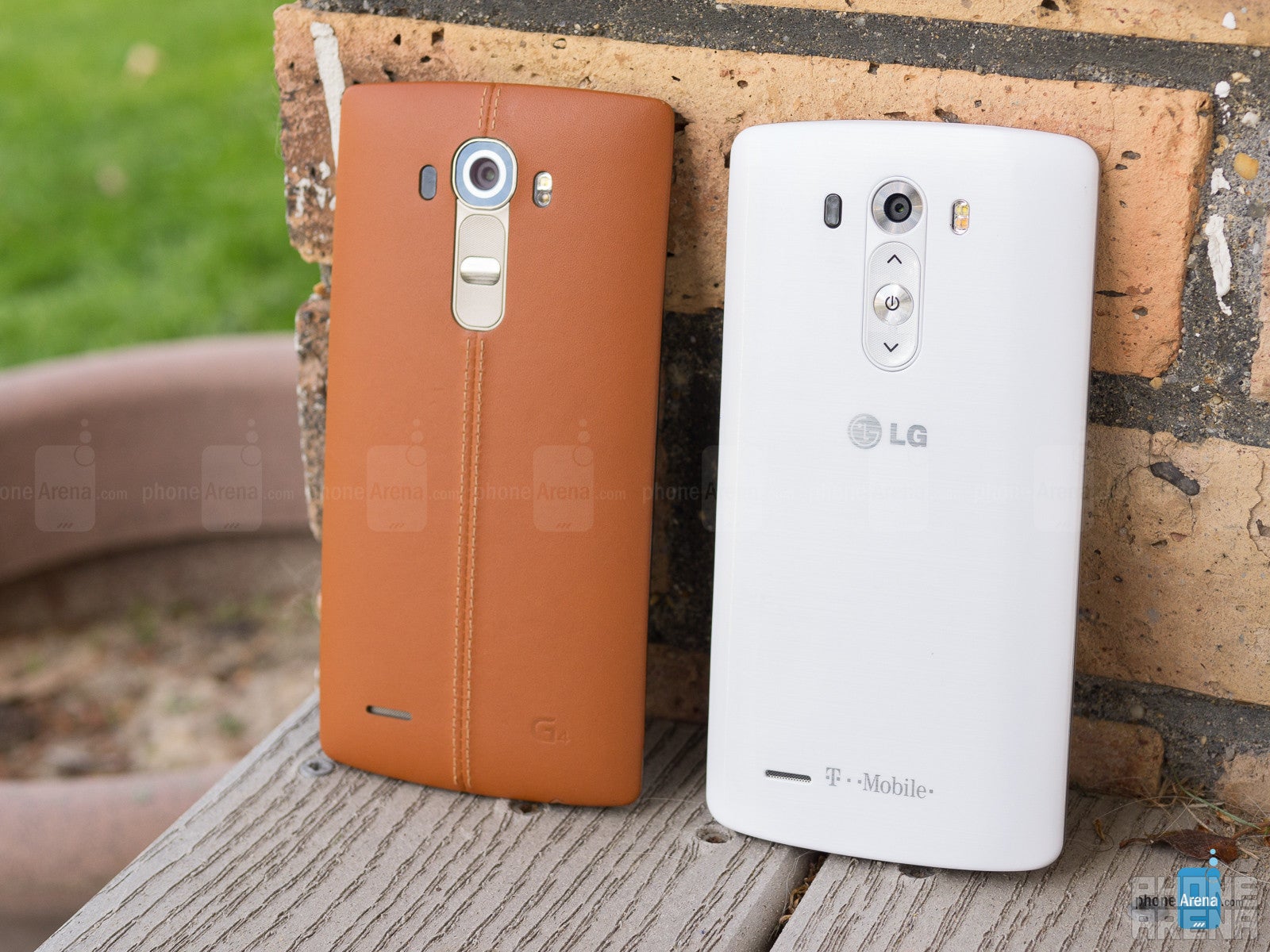
Still, should you encounter a dying battery in a demanding situation, you'll appreciate LG's choice to stick with removable batteries for both its high-end smartphones. Just swap the empty battery for a fresh unit (sold separately), and you're good to go. In the US, expect to pay about $30 for a spare battery from LG, which is priced above the average 10,000mAh portable battery pack, but provides an instant re-charge.
Conclusion
Beyond doubt, the LG G4 offers a significantly better experience than the LG G3 in the crucial camera and performance departments. The rest it has to offer over its older sibling, though, won't make you as enthusiastic about it. The G4 has grown a little bigger, yet there's no tremendous improvement in design (unless you love genuine leather). The display isn't much brighter, and unless you're into really punchy colors, you might be put off by the artificial vividness. The user interface, save for the glorious camera app, doesn't enjoy any meaningful improvements. The multimedia and call quality experiences are a tie, and if you aren't able to take advantage of the LG G4's Cat 9 LTE speeds, you won't enjoy any extended connectivity features from it. Finally, the battery life and charging times are the same you get from last year's flagship.
All things considered, it's up to you to decide whether the leather back, slightly better gaming performance, and superb cameras justify the LG G4's higher price tag. If you are a LG G3 owner and you're generally happy with the smartphone, we think you won't be missing out on anything incredibly special if you decide to hold onto it for another year. But we must acknowledge that the performance and camera improvements in the LG G4 will be tempting for avid gamers and photographers.

LG G4
Pros
- Significantly better performance
- Excellent camera improvements
LG G3
Pros
- More attractive price
- More accurate display colors
- Slightly easier to carry around
Follow us on Google News

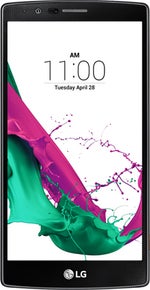
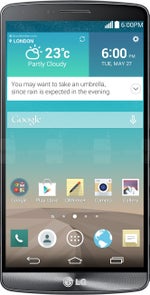









![Some T-Mobile users might be paying more starting in March [UPDATED]](https://m-cdn.phonearena.com/images/article/176781-wide-two_350/Some-T-Mobile-users-might-be-paying-more-starting-in-March-UPDATED.webp)
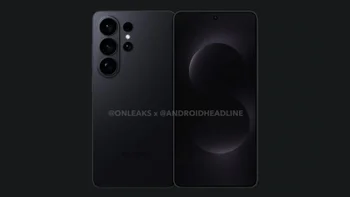
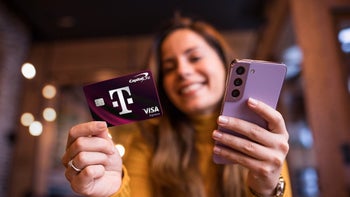


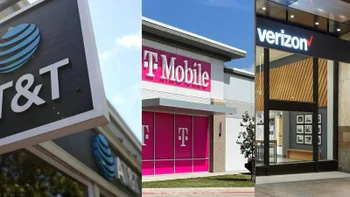
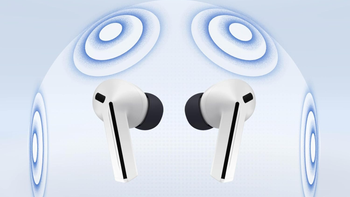
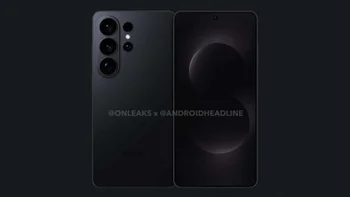

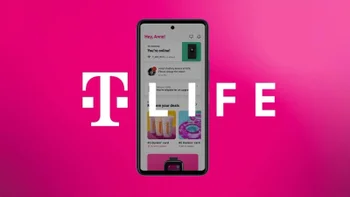

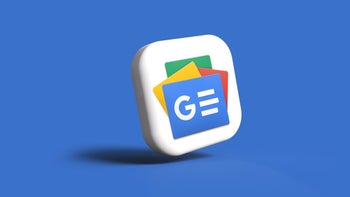
Things that are NOT allowed:
To help keep our community safe and free from spam, we apply temporary limits to newly created accounts: